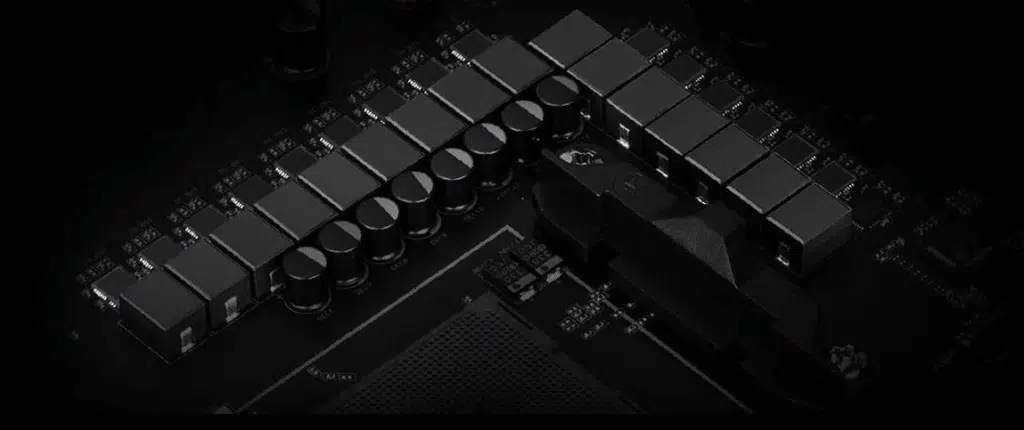
Introduction
GIGABYTE is a well known manufacturer of PC hardware ranging from motherboards, to graphics cards, peripherals and even power supplies. Like its competitors, GIGABYTE has diversified its product portfolio in the last decade or so. However, it is still primarily regarded as a motherboard manufacturer, at times shipping more motherboards that its chief competitor, ASUS. This is no small task given how prolific the latter company is.
The company has been around since the 1980’s and has grown into one of the most respected and popular DIY computer juggernauts. Like its competitors, the company created a line branded for gamers of which it has devoted a significant amount of effort, money and products to. The Aorus line targets gamers and PC enthusiasts and has been around for a few years now. Although, GIGABYTE created the Aorus line well after its competitors created their respective gaming lineups.
Despite being late to the party, GIGABYTE easily made up for lost time and has been producing some of the best motherboards on the market today under this branding. Today, we take a look at the GIGABYTE B550 Aorus Master.
GIGABYTE B550 Aorus Master
The GIGABYTE B550 Aorus Master is based on AMD’s B550 chipset which is compatible with AMD’s socket AM4 CPU’s. The B550 Aorus Master is built using a 2oz. copper, 6-layer PCB and has a VRM sporting 16 power phases with 70A power stages. Very quickly you figure out that despite the semi-budget chipset, this isn’t a budget motherboard offering at all. GIGABYTE made some interesting design choices which seem to be designed to make the B550 Aorus Master something of a poor man’s X570 motherboard.
The B550 chipset is a PCIe 3.0 chipset only. The PCIe 4.0 lanes come directly from the CPU alone. GIGABYTE has side stepped this somewhat, but diverting PCIe lanes from the primary x16 slot to two additional M.2 slots allowing for all three M.2 slots to be PCIe 4.0 compliant. However, this does require a PCIe 4.0 compatible GPU. It’s an interesting design and sets the B550 Aorus Master apart from other B550 motherboards. It is somewhat expensive for a B550 motherboard costing around $280 at the time of this writing. Actually being able to find one is another matter entirely.
Packaging
The packaging of the GIGABYTE B550 Aorus Master is pretty much identical to that of all other GIGABYTE motherboards in the Aorus family. The artwork on the box changes slightly sometimes, but otherwise the boxes are all the same only getting somewhat larger or smaller based on the board form factor and price point. Higher price point motherboards tend to be thicker as they’ll have more bundled accessories.

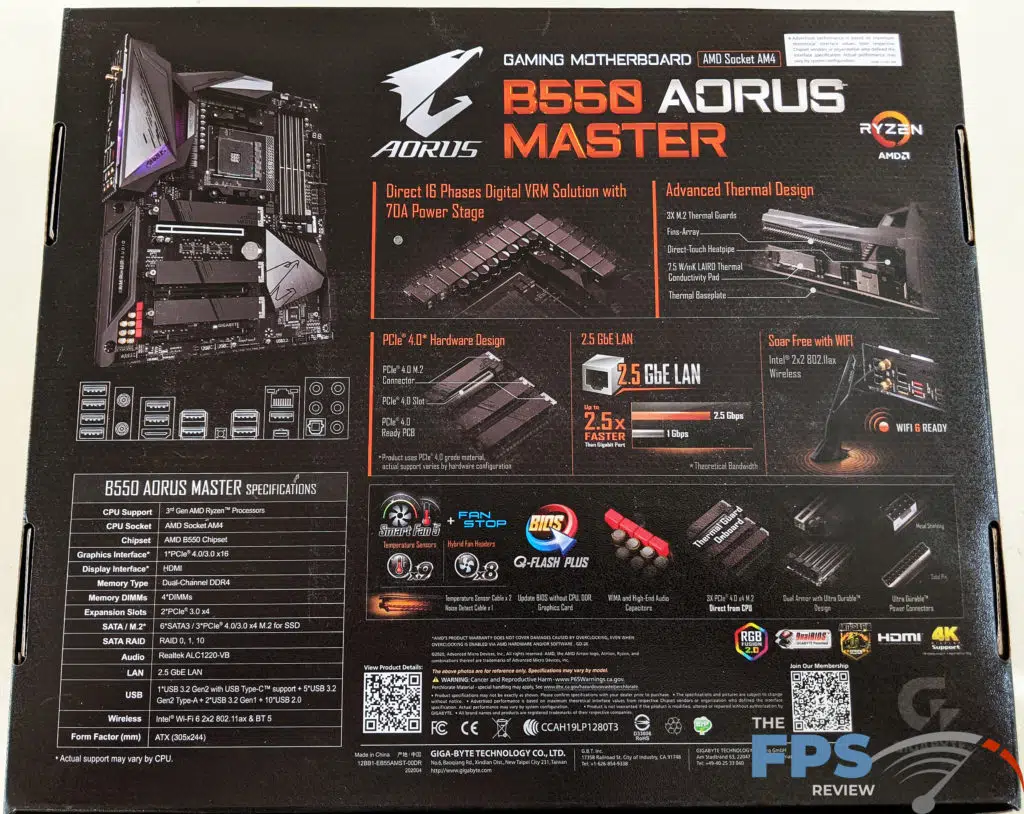

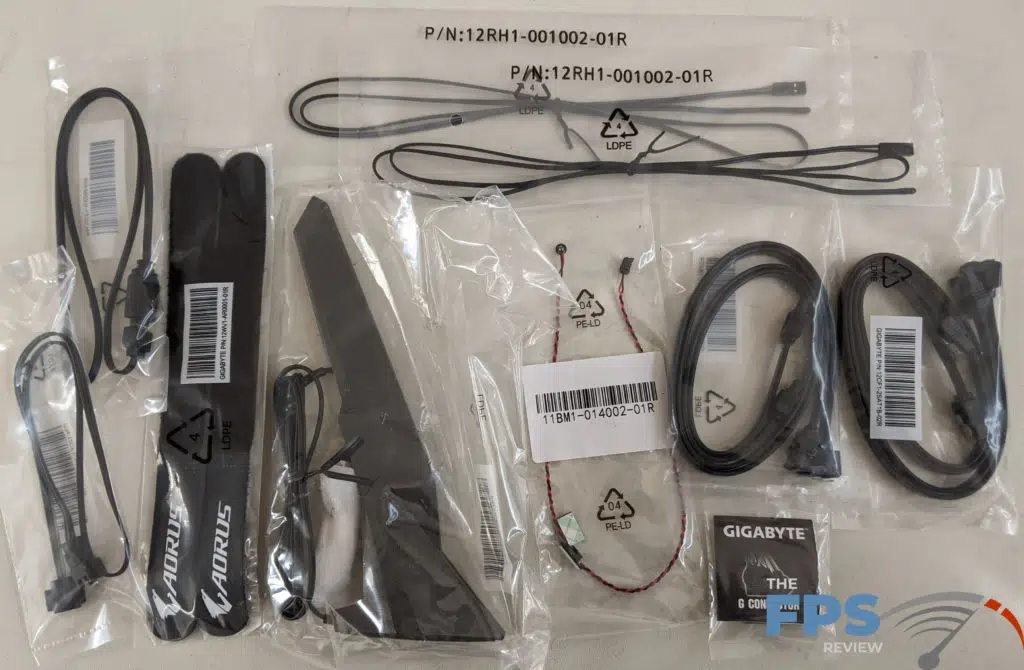
Inside the box, you’ll find the following items and accessories: 2x Velcro cable ties, wireless antenna, 2x RGB header extensions, 2x thermal probes, SATA cables, Q-Connector, muiti-lingual installation guidebook, user’s manual, and a sticker sheet.
Motherboard PCB Layout and Features

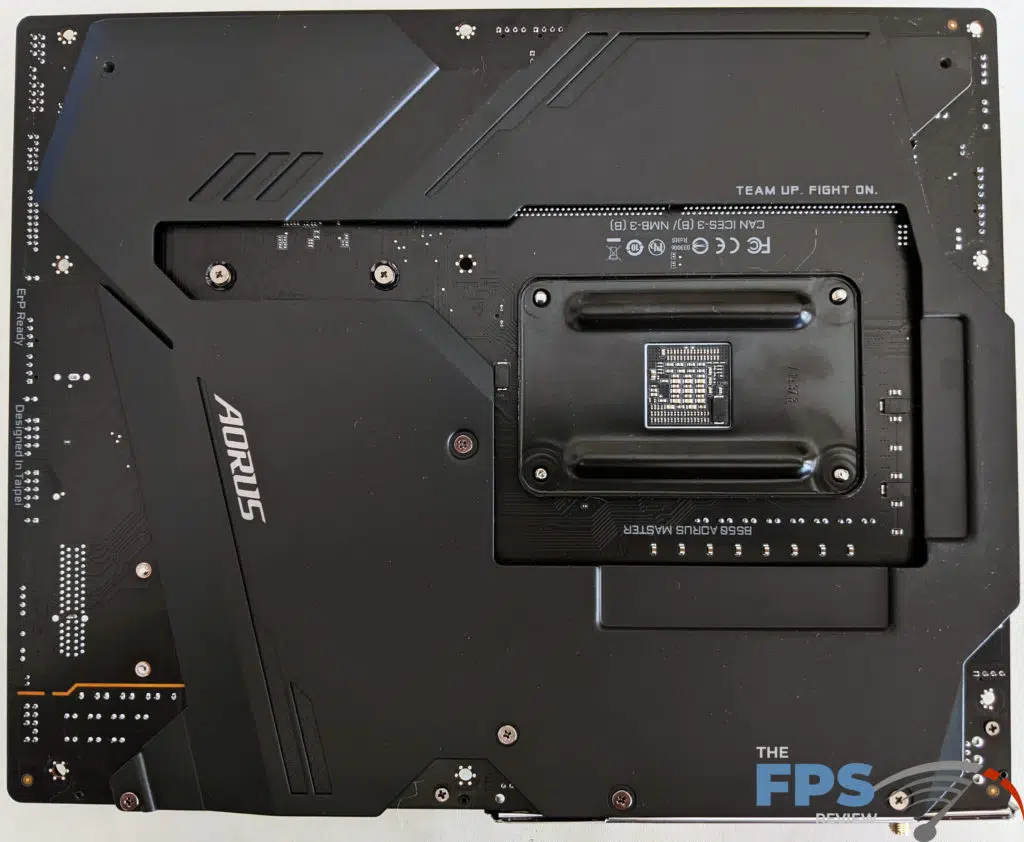
At first glance, the B550 Aorus Master looks like a much higher end motherboard than it actually is. It looks like a motherboard that cost upwards of $150 or more than it does. The board has an amazing layout, If I had to complain about anything, it would be the CMOS battery location, but this is really only an issue in watercooled builds where hard tubing is used where moving your GPU is a lot of trouble.
As stated earlier, the B550 Aorus Master is constructed with a 2oz. copper, 6-layer PCB. Like most other aspects of the board, GIGABYTE didn’t skimp on fan headers. You have 1x CPU fan header, 1x watercooling CPU fan header, 4x chassis fan headers, and 2 system / waterpump headers. The location of these are also excellent as it allows the wires to be run out of the way in most chassis. That being said, there are a lot of ways to do this so these locations aren’t the only viable ones.
GIGABYTE also provides 2x addressable RGB headers and one standard RGB header. Other elements of the motherboards design are well thought out with good placement of SATA and USB headers. There is some cosmetic plastic cladding, but its used somewhat sparingly.
Power Delivery
Despite being almost a midrange offering, GIGABYTE went with a higher end VRM implementation. With B350, B450 and some B550 motherboards, using a 16c/32t CPU is less than ideal. It’s not a problem with the GIGABYTE B550 Aorus Master.

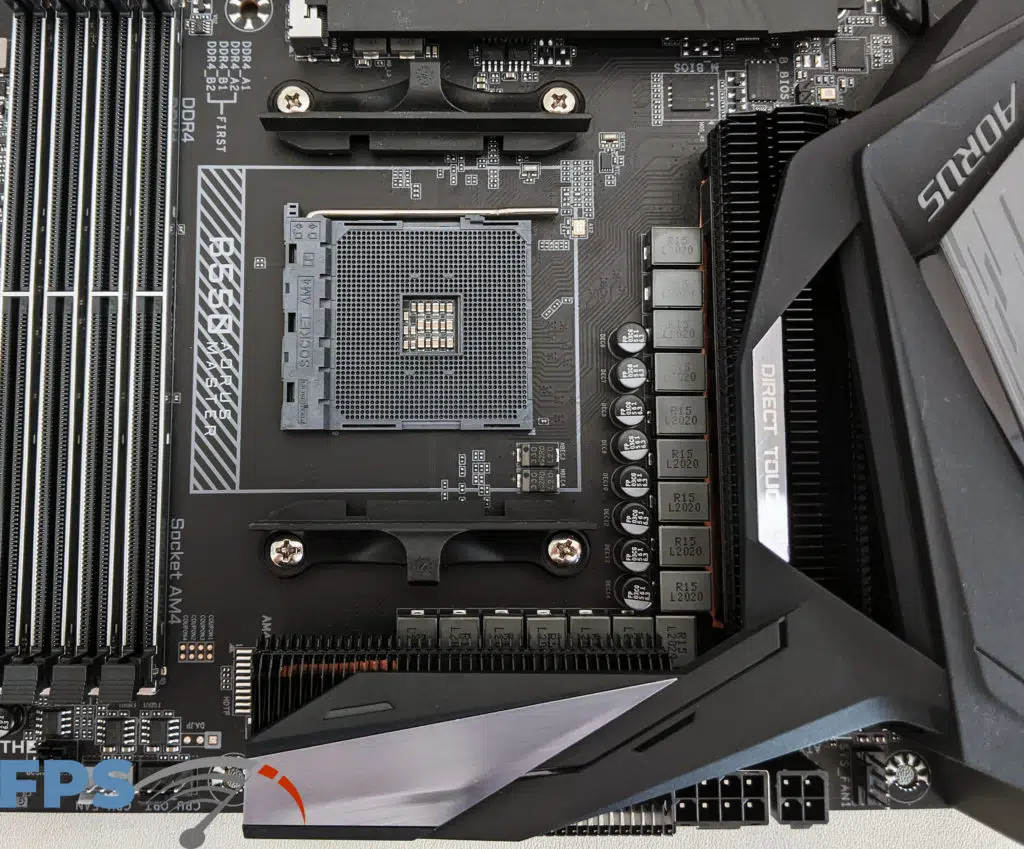
The GIGABYTE B550 Aorus Master has the same VRM implementation it uses on higher end motherboards like the X570 Aorus Xtreme. That means, you get one of the most powerful VRM’s on the market (for a mainstream motherboard anyway), at midrange prices.
The VRM implementation features a 14+2 phase design utilizing Infineon TDA21472 70A smart power stages. The voltage controller is in Infineon XDPE132G5C. It is capable of handling up to 16 phases. In this case its running in a 14+2 phase configuration. 2 phases are dedicated to SoC voltage while the rest are for CPU vCore. Given how overbuilt the VRM implementation is, it is very efficient and therefore runs cooler than most other motherboard VRMs will.
It is also capable of powering any past or present socket AM4 CPU with ease, regardless of core count or overclock. This motherboard has enough VRM capability to push any LN2 overclock on one of these CPU’s. Again, its the same VRM that’s used on the GIGABYTE X570 Aorus Xtreme, which is one of the best out there.
Cooling the MOSFETs are basic aluminum heatsinks with a very thin fin design. This creates a great deal of surface area, although you can’t see a whole lot of the heat sinks as they are covered by the plastic cladding that also covers the rear I/O ports and holds the I/O shield in place.
Memory Support
The B550 Aorus Master has four 288-pin DDR4 DIMM slots supporting a total of 128GB of DDR4 memory at speeds exceeding DDR4 5000MHz through overclocking. GIGABYTE chose not to color code these to denote proper dual channel memory mode operation. However, the PCB is marked to instruct people on the proper configuration. GIGABYTE also opted to use slots with dual locking tabs for module retention rather than the single locking tab style slots. This is fine, especially in this case where the memory slots are no where near the expansion slot area and there is plenty of clearance for installation and removal of modules in a completed system.

These slots sport GIGABYTE’s memory armor. Marketing terminology aside, the Memory Armor is a set of reinforced brackets on the DIMM slots which prevent plate bending and warping of the PCB while memory modules are installed onto the motherboard. Honestly, this is a far bigger problem with PCIe expansion slots than memory slots but the attention to detail is always appreciated. It also adds an aesthetic quality to the motherboard which is important to some people.
Chipset Cooling

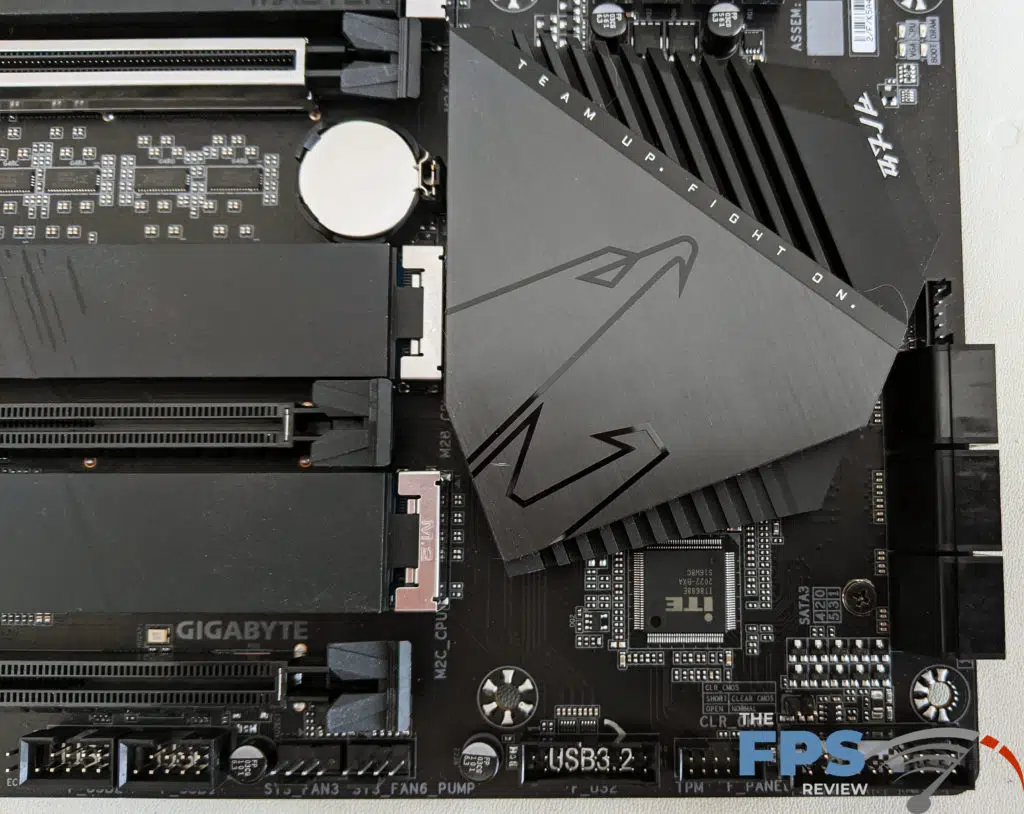
Unlike the X570 chipset, the B550 doesn’t require active cooling due to having roughly a third of the TDP. The heat sink is simple and flat. It’s a highly stylized design that’s attractive and functional enough for the job at hand. It is secured in place with mounting screws rather than cheaper tension style push pins. Unfortunately, the flat black finish does scratch easily and its a dust magnet.
Expansion
The expansion slot area is well thought out and while it looks ordinary, it isn’t. Unlike X570, B550 doesn’t support PCI-Express Gen 4.0. Instead, the two bottom most PCIe x16 slots operate in PCIe 3.0 x4 mode, although they are physically x16 slots. The primary PCI-Express slot lanes come from the CPU’s integrated PCIe controller. Interestingly, the motherboard has three M.2 slots, all of which can be PCIe 4.0 complaint despite not having PCIe 4.0 support from the chipset.
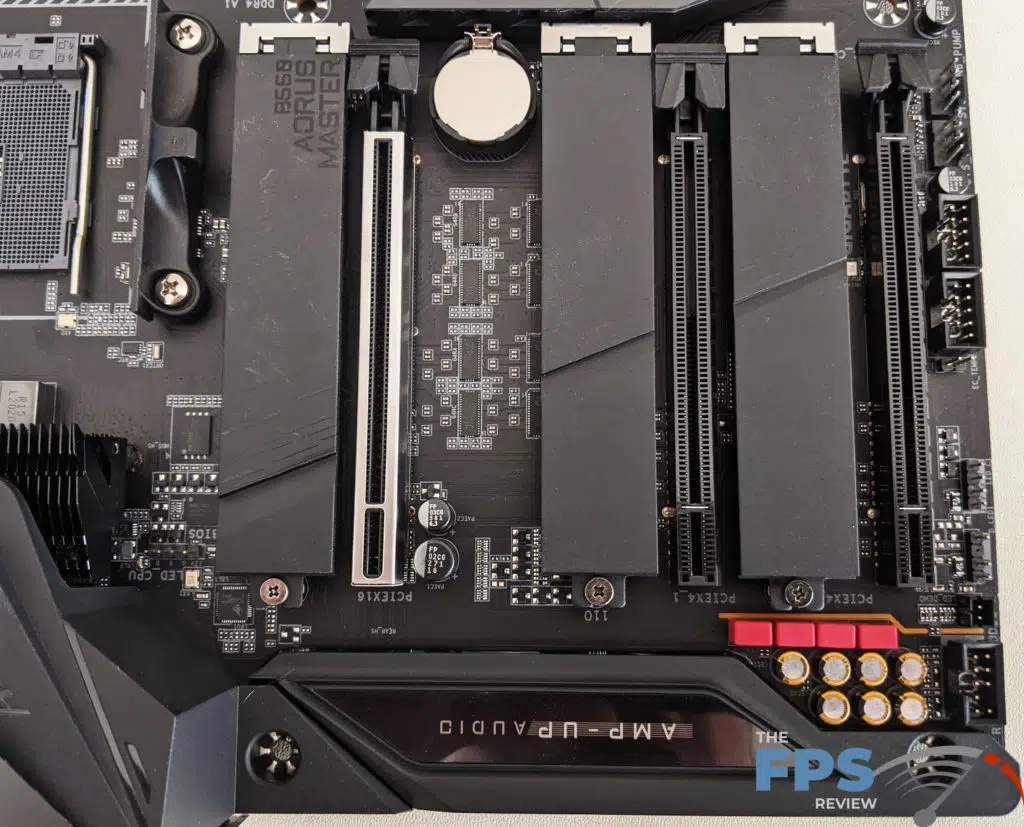
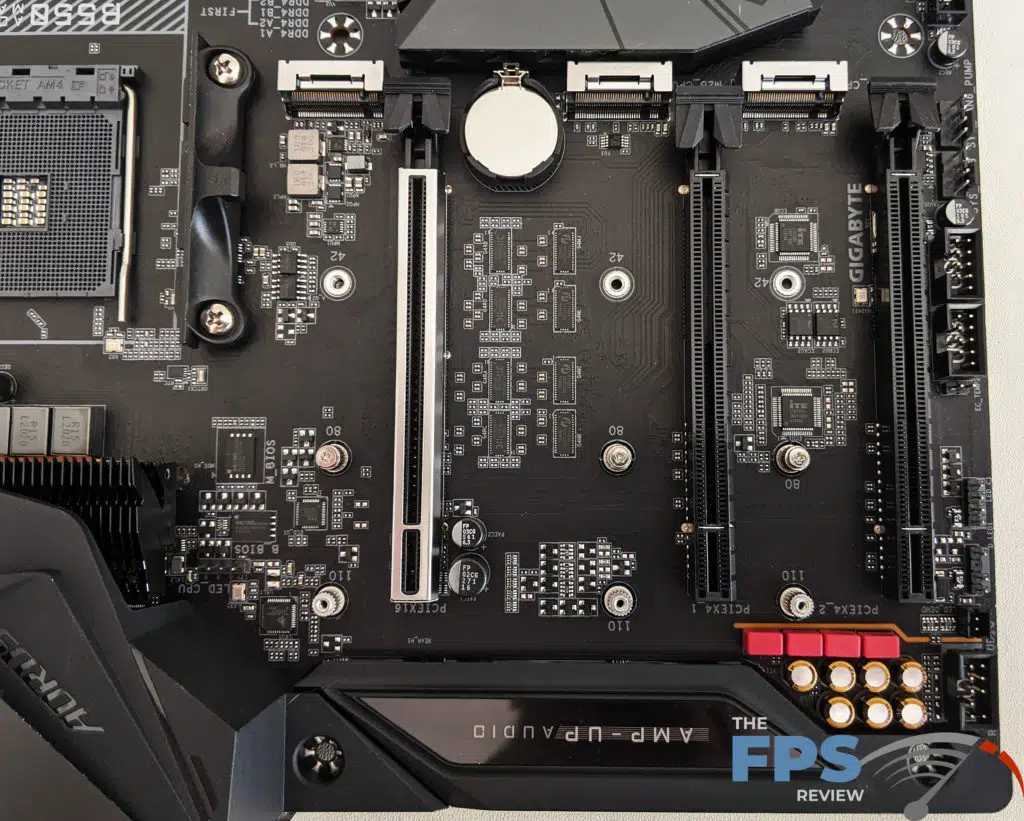
As expected, the M.2 slots have covers which double as heatsinks. They also have thermal pads on the back for heat transfer. As a nice touch, these have captive screws on the covers which makes working with them a lot nicer. This is especially true in a vertical configuration when installing drives in a working system.
This is achieved through complex PCIe lane switches which divert 8x PCIe lanes from the primary PCI-Express x16 slot to two extra M.2 slots allowing for full 4x PCIe Gen 4.0 lanes to be used for each M.2 slot. Of course, the first M.2 slot of the three already has a dedicated link to the CPU’s PCIe controller and therefore is PCIe Gen 4.0 compliant when using the proper Ryzen 3000 or 5000 series CPU’s.
However, PCIe 4.0 support for the second and third M.2 slots would also require using a PCI-Express 4.0 compatible GPU. At present, that limits you to the Radeon 5000 and 6000 series GPU’s or NVIDIA’s 30 series. This is because the mode of the lanes being switched is determined by the GPU installed in that slot.
It’s an interesting design and a nice potential workaround for the B550 chipset to get more meaningful PCIe 4.0 support, but it does come at a cost. That cost being 8x PCIe lanes from the GPU. Whether or not that’s a big deal is a matter of personal preference as the differences in games can be measurable but not necessarily something you’d notice.
Rear I/O Panel

The rear I/O panel is actually what you would expect from a mid-range motherboard. There are 6x USB 1.1/2.0 ports, 5x USB 3.2 Gen 2 (Type-A) ports, 1x USB 3.2 Gen 2 ports (Type-C), 1x RJ-45 2.5GbE LAN port, 2x WiFi antenna connections, 5x mini-stereo jacks and 1x optical output.
